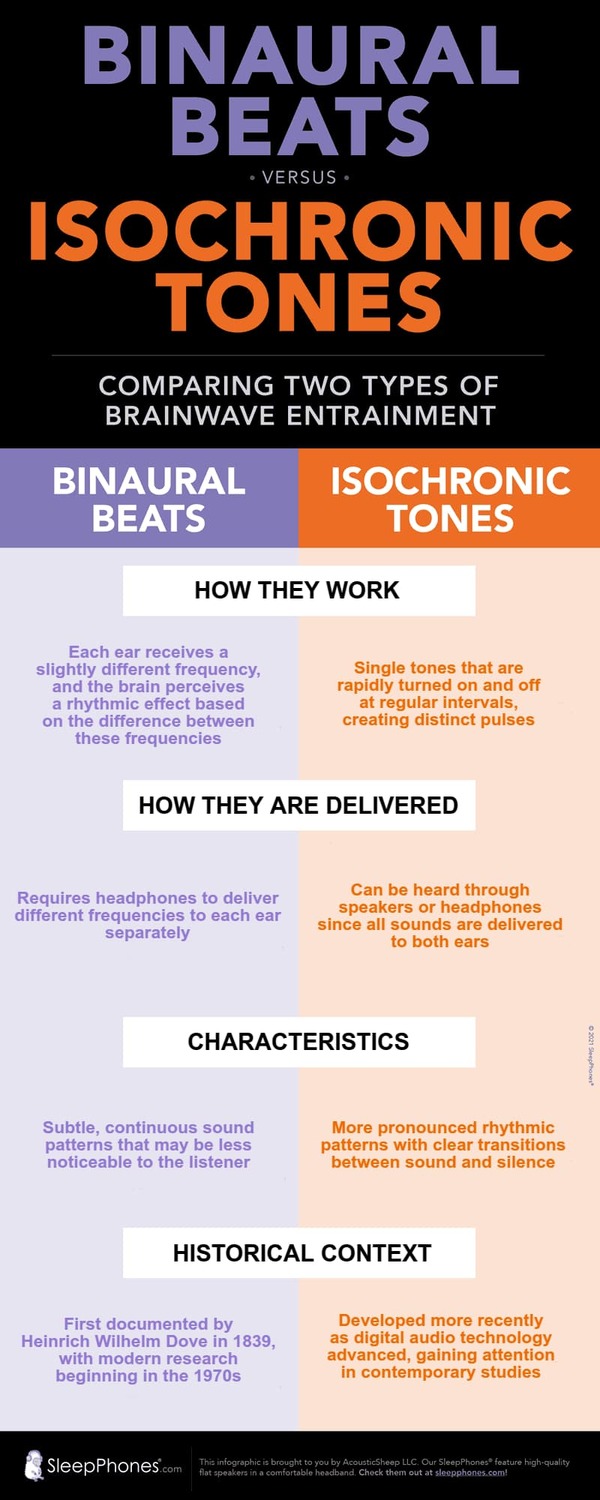What to Know About Brainwave Entrainment

What if you could get in the right state of mind to study, sleep, and more just by listening to certain sounds or watching lights?
It may sound too good to be true, but it's the premise behind brainwave entrainment. This growing phenomenon involves using stimuli like sound, vibrations, and light to synchronize your brainwaves to a certain frequency. Different frequencies correspond to different goals you're trying to attain. Some common goals include sleep, relaxation, dreaming, enhanced focus, or a trance state.
How Isochronic Tones for Brain Entrainment Work
One of the most popular and effective stimuli used in brainwave entrainment is isochronic tones. Also known as isochronic beats, they are tones that are turned on and off very quickly. This often sounds like a series of sounds or pulses.
Isochronic tones are specially made to change your brainwave activity to achieve a goal, like falling asleep. This usually changes your brain activity from high activity beta waves to lower activity alpha or theta waves.
Brainwave entrainment starts to work as your brainwaves match the isochronic tones. Your brainwaves become "entrained" via what's known as the frequency following response. Once your brainwaves reach this new state, you're now on track to enjoy a new, more optimized state of being.
The Difference Between Binaural Beats and Isochronic Tones

Perhaps you've also heard of binaural beats and wondered what's the difference between binaural beats and isochronic tones.
For starters, they're both sounds that are used for brainwave entrainment. So they can both help you sleep better, relax, kick a bad habit, and more.
The main difference lies in how the beats are created. With isochronic tones, you are hearing distinct beats. With binaural beats, your brain perceives something of a phantom beat that's created when two plain tones of different frequencies are played into each ear. Your brain then recognizes the tones as different and produces a beat after processing them. This beat is the difference between the two frequencies. In this way, binaural beats are something of an auditory illusion while isochronic tones are not.

Isochronic tones are newer to the scene than binaural beats, which were first discovered in 1839. Most people find that isochronic tones have a sharper, more defined sound than binaural beats.
How to Listen to Isochronic Beats and Binaural Beats
When it comes to brainwave entrainment, you first want to pin down your goal. Lots of people use brainwave entrainment for sleep, but there are many other ways you can use it to improve your life.
Next, you'll want to find just the right beats. There are many YouTube channels dedicated to brainwave entrainment. If binaural beats interest you, we offer six binaural beats mp3 tracks on the SleepPhones® website.
Quality headphones are a must if you're listening to binaural beats and nice-to-have if you're listening to isochronic beats. You'll want headphones that aren't only well made, but also comfortable. This is especially the case if your brain entrainment session takes place in bed.
More than a million people worldwide have found SleepPhones® headphones to be just the headphones they need when it comes to brain entrainment. SleepPhones® headphones feature flat speakers in a soft, stretchy headband. They're made to wear in bed, even if you're a side sleeper.
Many studies have shown that using isochronic beats and binaural beats for brain entrainment can help reduce anxiety, alleviate stress, improve immune function, and more. Like eating well and exercising, it's best to make brain entrainment part of your daily schedule. Just 20 minutes a day of brain entrainment can make a noticeable difference in your life.
Find more about binaural beats at our "Binaural Beats" resource page.
Find more about relaxing with SleepPhones® headphones on our "Relaxation" resource page.
